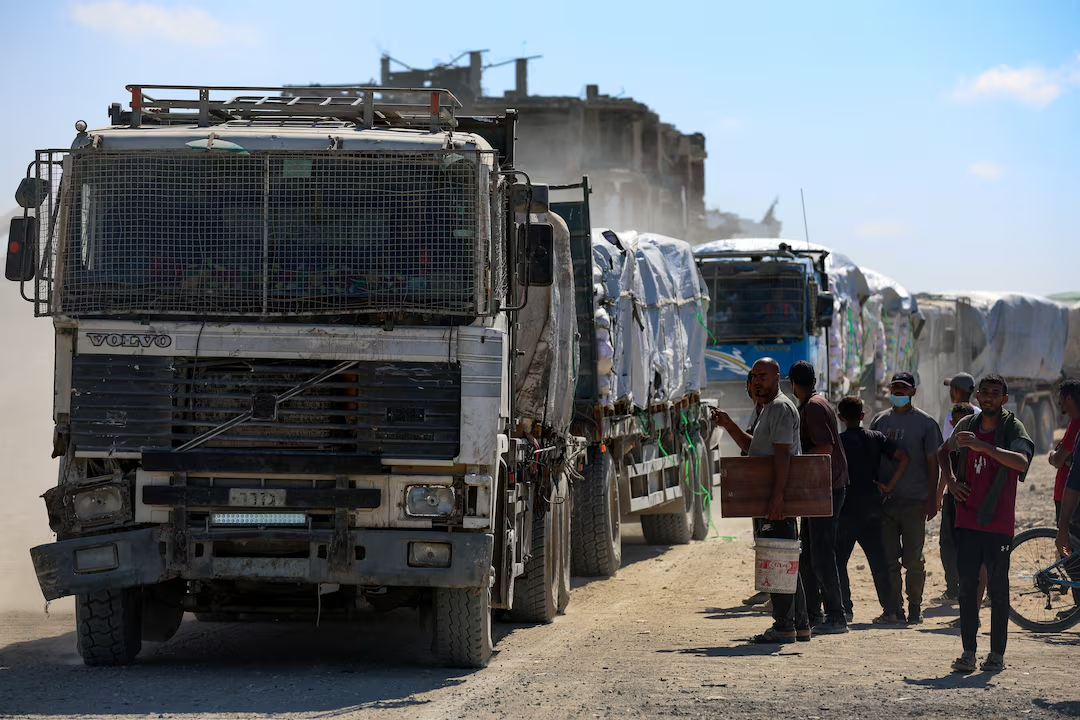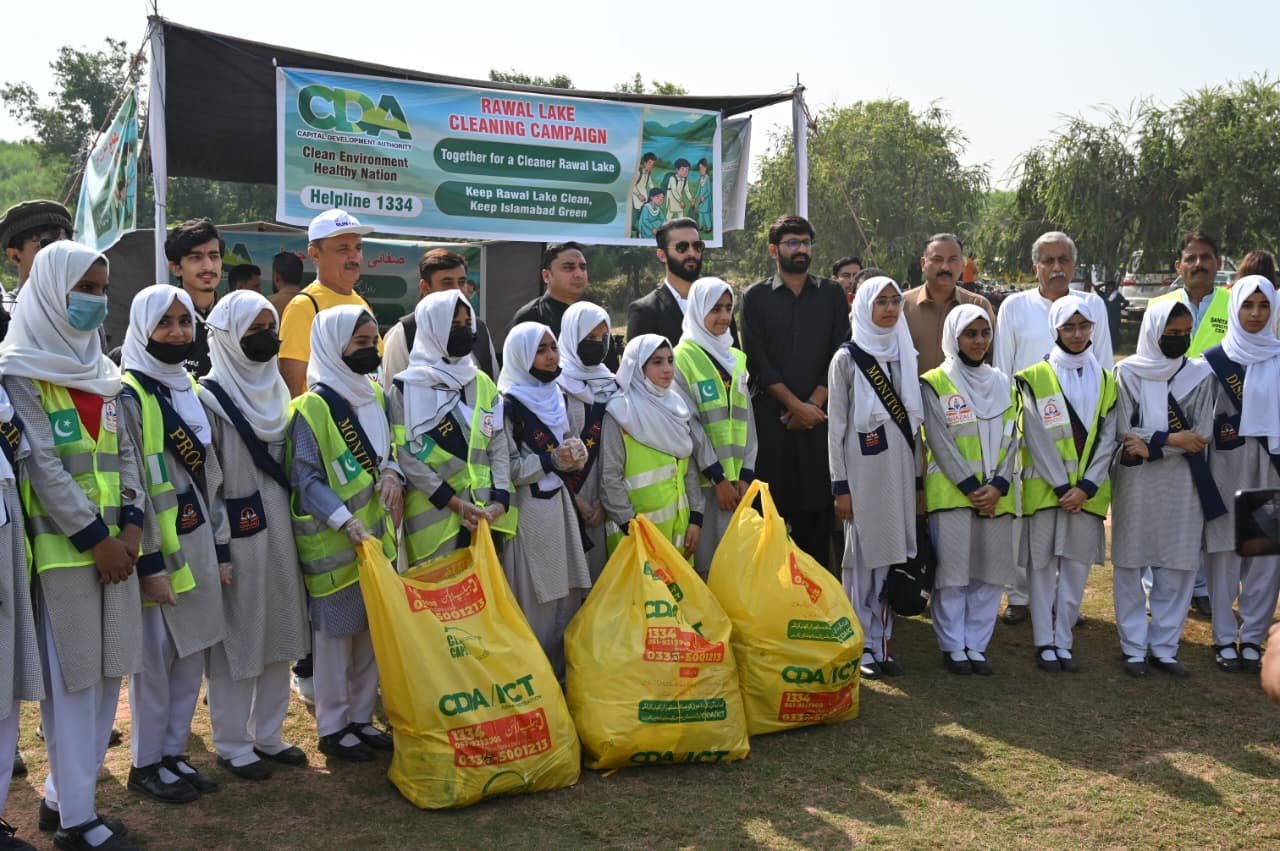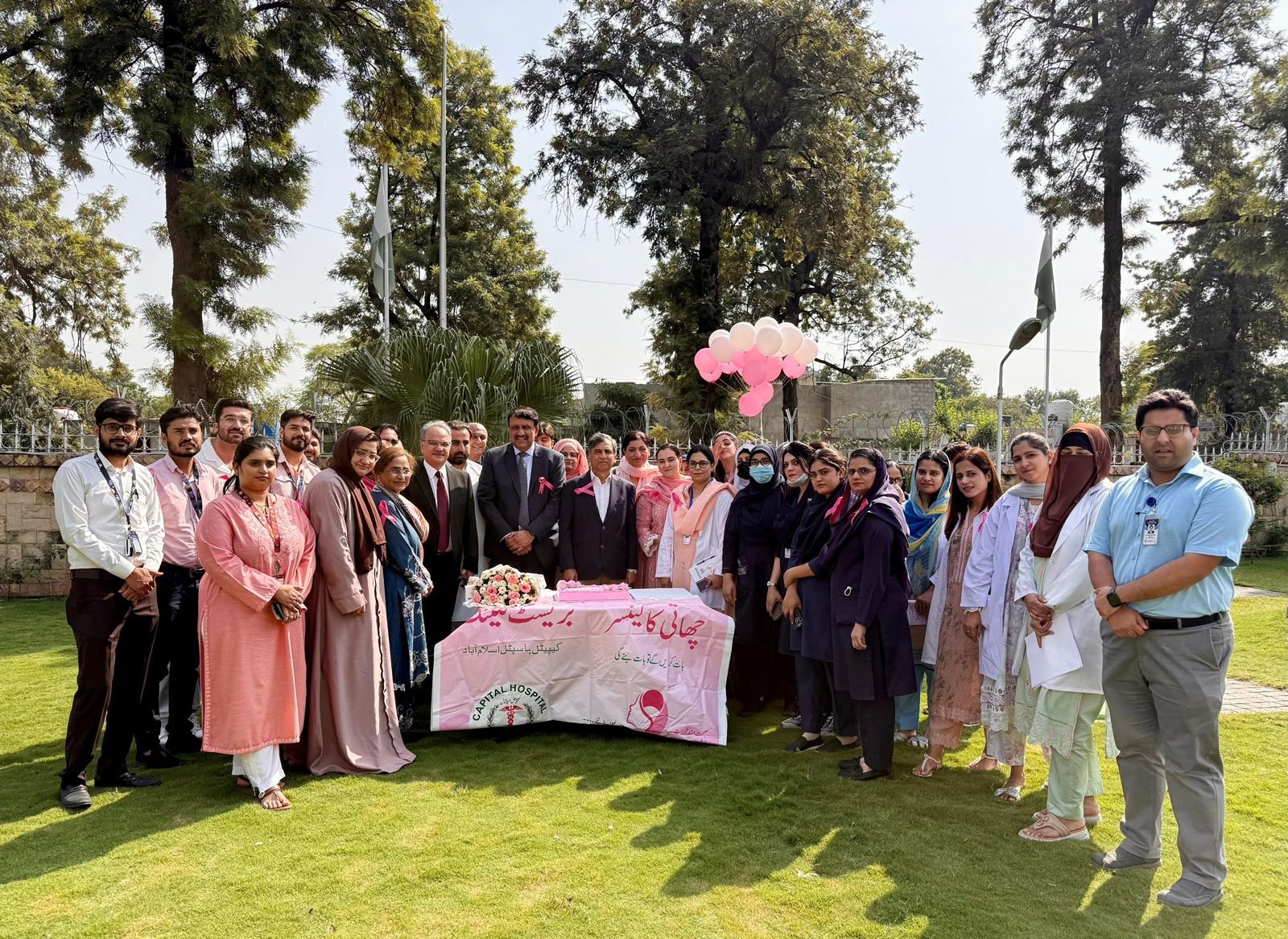Aid trucks entered Gaza on Wednesday as part of the Gaza aid convoy, while Israel prepared to reopen the Rafah crossing. The move followed a brief pause in its dispute with Hamas over the return of hostage bodies and signaled cautious progress in a fragile ceasefire that has ended two years of devastating warfare and secured the release of all living hostages.
The Gaza aid convoy is part of a larger humanitarian effort. It was delayed earlier due to Israeli concerns about the slow return of deceased hostages. After Hamas handed over additional bodies overnight, Israeli officials confirmed that up to 600 trucks carrying essential supplies would enter the enclave.
Hamas returned four bodies on Monday and another four late Tuesday. Israeli authorities later clarified that one of them was not a hostage. Despite this progress, disputes over the remaining 21 bodies still threaten the truce. Unresolved demands for Hamas to disarm and surrender control add further tension.
The ceasefire, brokered by U.S. President Donald Trump, outlines several future steps. These include forming an international force to govern Gaza and taking initial moves toward a Palestinian state. Meanwhile, Hamas has launched a harsh security crackdown, including public executions and clashes with local clans. Palestinian Authority Chairman Mahmoud Abbas condemned the campaign, calling it brutal and destabilizing.
On the humanitarian front, the situation remains dire. Nearly all residents have been displaced, and famine conditions persist. Health facilities are overwhelmed, and basic infrastructure is in ruins. The aid convoy crossing from Egypt into Rafah carried fuel, food, medical supplies, and tools to repair essential systems.
Aid also flows through the Kerem Shalom crossing after Israeli security checks. According to Israel’s public broadcaster Kan, Wednesday’s deliveries included cooking gas and materials for rebuilding damaged areas.
Despite the ceasefire, political tensions remain high. Israel’s far-right National Security Minister Itamar Ben-Gvir criticized the aid shipments, calling them a “disgrace.” He accused Hamas of manipulating the hostage exchange process. His remarks revealed deep divisions within Israel’s leadership over the terms of the truce.
The Palestinian Authority is preparing to resume operations at the Rafah crossing, which it once managed with EU assistance. Israel had closed the crossing in 2007 after Hamas seized control of Gaza. Limited movement later resumed under Egyptian coordination.
Violence inside Gaza also continues. Hamas forces have targeted rival clans accused of criminal activity. The Popular Front for the Liberation of Palestine supported the crackdown, describing the targeted groups as “hubs of crime.” Israeli troops have pulled back to a designated “yellow line” outside major cities. Defence Minister Israel Katz warned of immediate retaliation if Hamas violates the ceasefire.
For now, the reopening of Rafah and the movement of aid convoys mark a cautious step forward. Yet major political and humanitarian challenges remain unresolved, leaving the road to lasting peace uncertain.










